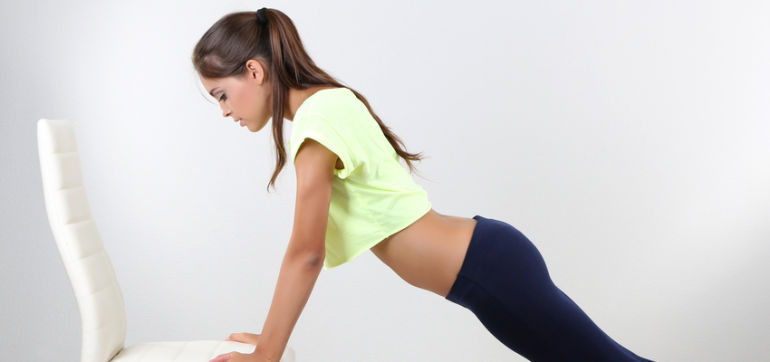Urinary incontinence in women can be treated with new recommendations, specialized yoga programs
 Urinary incontinence (UI) in women can be treated with new recommendations and specialized yoga programs. The findings come from UC San Francisco where researchers found that a specialized yoga program could help improve women’s urinary incontinence. The specialized yoga program is aimed at improving pelvic health, which can provide women with better control over their urination and help avoid accidental urination.
Urinary incontinence (UI) in women can be treated with new recommendations and specialized yoga programs. The findings come from UC San Francisco where researchers found that a specialized yoga program could help improve women’s urinary incontinence. The specialized yoga program is aimed at improving pelvic health, which can provide women with better control over their urination and help avoid accidental urination.
First author Alison Huang said, “Yoga is often directed at mindful awareness, increasing relaxation, and relieving anxiety and stress. For these reasons, yoga has been directed at a variety of other conditions – metabolic syndrome or pain syndromes – but there’s also a reason to think that it could help for incontinence as well.”
The researchers recruited 20 women over the age of 40 with urinary incontinence. Half of them were assigned to the specialized yoga program for six weeks, and the other half served as controls. After six weeks, the women in the yoga program experienced a 70 percent improvement in bladder function and reduction in urinary leakage, and the control group only saw a 13 percent improvement. The biggest improvements were seen in stress incontinence, which is urine leakage brought on by laughing, coughing, or sneezing.
The researchers believe the yoga program helps improve urinary incontinence in numerous ways. For starters, it helps reduce depression and anxiety by promoting mindfulness and relaxation. Secondly, it helps women strengthen their pelvic floor muscles, which offer protection against incontinence.
Huang added, “We thought this would be a good opportunity for women to use yoga to become more aware of and have more control over their pelvic floor muscles.”
“We specifically developed a yoga therapy program that would be safe for older women, including women with minor mobility limitations. So we were partially assessing safety of this program for older women who are at highest risk for having incontinence in the first place.”
It’s important to note that not all forms of yoga can improve urinary incontinence, and the yoga used in the study was a specialized yoga program created by experts in order to specifically improve bladder incontinence.
“It would be a way for women to gain more control over their pelvic floor muscles without having to go through traditional costly and time-intensive rehabilitation therapy,” said Huang.
Men were not included in the study as urinary incontinence is more common in women than in men, and in men it is often related to prostate problems.
The researchers hope to build upon their research with longer studies that include more participants.
Treating urinary incontinence in women by new evidence-based clinical practice guidelines
New evidence-based clinical practice guidelines recommend Kegel exercises, bladder training, weight loss, and exercise as effective nonsurgical means to improve urinary incontinence in women. The guidelines come from the American College of Physicians (ACP).
President of ACP Dr. David Fleming said, “Urinary incontinence is a common problem for women that is often underreported and underdiagnosed. Physicians should take an active approach and ask specific questions such as onset, symptoms, and frequency of urinary incontinence. It is estimated that about half of the women with incontinence do not report it to their doctor.”
To combat stress incontinence, the guidelines recommend Kegel exercises to improve the strength of the pelvic floor, as opposed to drug therapy. For urgency incontinence, bladder training is recommended, but if this is unsuccessful, then medication may be prescribed. Additionally, medication should be chosen based on adverse effects and tolerability.
For obese women with urinary incontinence, weight loss and exercise are recommended, as added weight can apply pressure to the bladder thus resulting in the urge to urinate.
“Physicians should utilize non-drug treatments as much as possible for urinary incontinence. Kegel exercises for stress UI, bladder training for urgency UI, and Kegel exercises with bladder training for mixed UI are effective, have few side effects, and are less expensive than medications. Although various drugs can improve UI and provide complete continence, adverse effects often lead many patients to stop taking their medication.”
Urinary incontinence risk increases with age, with 25 percent of 14- to 21-year-olds being affected, and 44 to 57 percent of women 40 to 60 years of age. Among women aged 75 and over, 75 percent experience urinary incontinence.
Risk factors for urinary incontinence include pregnancy, pelvic floor trauma after vaginal delivery, menopause, hysterectomy, obesity, urinary tract infections, functional and/or cognitive impairment, chronic cough, and constipation.
Urinary incontinence risk higher after vaginal birth
A new study conducted by Finnish researchers has found that the risk of urinary incontinence raises slightly after vaginal birth, compared to women who deliver their children through C-section. The U.S. researchers stress the fact that C-section delivery comes with its own list of risks, so choosing the right form of delivery should be up to the woman and doctors. Continue reading…
-
Diet And Exercise Evolution Water 65 Of Your Body Cant Be Wrong
The Liver The function of your kidneys is to filter your blood (which
-
Weight Loss Basics -- Measuring Progress
(Fifth in a Series) The Goal Clearly, progress toward any one goal
-
Hcg Weight Loss Will Help To Change Your Eating Habits
Nowadays weight-losing has become popular among young and middle-aged
-
Seven Reasons Why You Might Take Hoodia
Good health is all too easily taken for granted until something unexpe
-
I Need to Lose Weight! HELP!
I Need to Lose Weight! HELP!
-
Healthy Dieting - Tips and Tricks to Meet Your Goal
Healthy Dieting Tips When it comes to d
- DON'T MISS
- Researchers question long-term benefits of popular diets
- Increase Weight Loss Motivation Using A Simple Secret
- How to Gain Healthy Weight
- Five Surprising Facts About Weight Loss Surgery
- Phentermine Shed Your Extra Pounds
- How To Get Started Exercising Despite Obesity And Low Energy Levels
- Simple Ways to Get Slim, Drop Cellulite and Increase Breast Size Without Surgery
- How I Lost 65 Pounds (And Actually Had Fun Along The Way)
- How to Lose Weight and Keep it Off Permanently - Useful Facts You Might Not Know
- The KEY To TRUE Weight Loss




